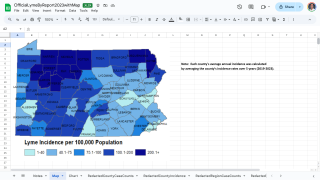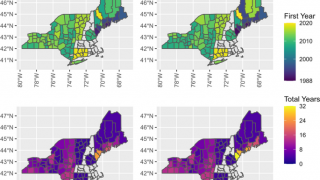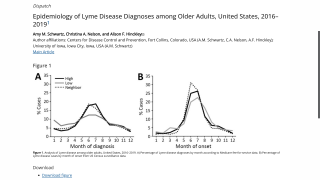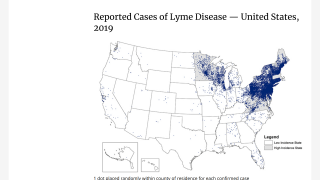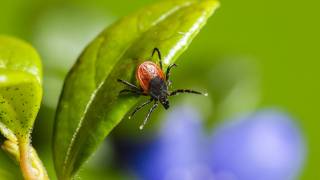Wisconsin Sets Lyme Disease Record in 2017

Many Wisconsin residents are tired of the snow and more than ready to enjoy the warm weather.
However, the Wisconsin Department of Health Services (DHS) strongly encourages everyone to take precautions to avoid ticks.
Many people consider ticks to be just another annoyance when they’re enjoying outdoor activities.
However, Wisconsin ticks do transmit various illnesses, including Lyme disease.
During 2017, Wisconsin reported setting a new milestone with 4,299 cases of Lyme disease.
Worldwide, Lyme disease is caused by three main species of bacteria: Borrelia burgdorferi, B. afzelii, and B. garinii.
In the USA, Borrelia burgdorferi is transmitted to humans by a tick named Ixodes scapularis, which are commonly called the black-legged or deer ticks.
A rare, newly emerging bacterium species, Borrelia mayonii, was first detected in 2013 in Wisconsin, reports the Centers for Disease Control and Prevention (CDC).
Unlike B. burgdorferi, B. mayonii appears to be associated with nausea and vomiting, diffuse rashes, and a higher concentration of bacteria in the blood.
Current CDC evidence suggests that B. mayonii is only found in the upper Midwestern United States.
“If left untreated, Lyme disease in people can progress into more chronic and serious disorders,” said Maria Esteve-Gasent, Ph.D., assistant professor at the Texas A&M College of Veterinary Medicine & Biomedical Sciences.
Lyme disease may cause symptoms affecting the skin, nervous system, heart or joints of an infected person.
Additionally, Lyme disease costs the U.S. healthcare system between $712 million and $1.3 billion a year.
Most early stages of Lyme disease can be treated with oral antibiotics.
Effective oral antibiotics often used during the early stages of infection include doxycycline and amoxicillin for adult patients. Doxycycline is not recommended for children under 8 years of age or women who are pregnant or breastfeeding.
In some cases, Lyme disease in its later stages can be difficult to treat and severe cases may require intravenous treatment.
Intravenous antibiotic treatment with penicillin or ceftriaxone is recommended for patients with neurologic or cardiac clinical signs or symptoms to prevent the development of late, disseminated or persistent Lyme disease.
Which means, two-tier testing can be helpful for detecting infection with B. mayonii if used correctly and performed with FDA cleared tests.
In the USA, 14 states are classified as “high incidence” for Lyme Disease: Connecticut, Delaware, Maine, Maryland, Massachusetts, Minnesota, New Hampshire, New Jersey, New York, Pennsylvania, Rhode Island, Vermont, Virginia, and Wisconsin.
During 2008–2015, these states accounted for 95 percent of the 275,589 cases of Lyme disease that were reported to CDC.
That’s why the CDC offers tips to help prevent tick bites while still enjoying the outdoors this spring and summer.
Our Trust Standards: Medical Advisory Committee



